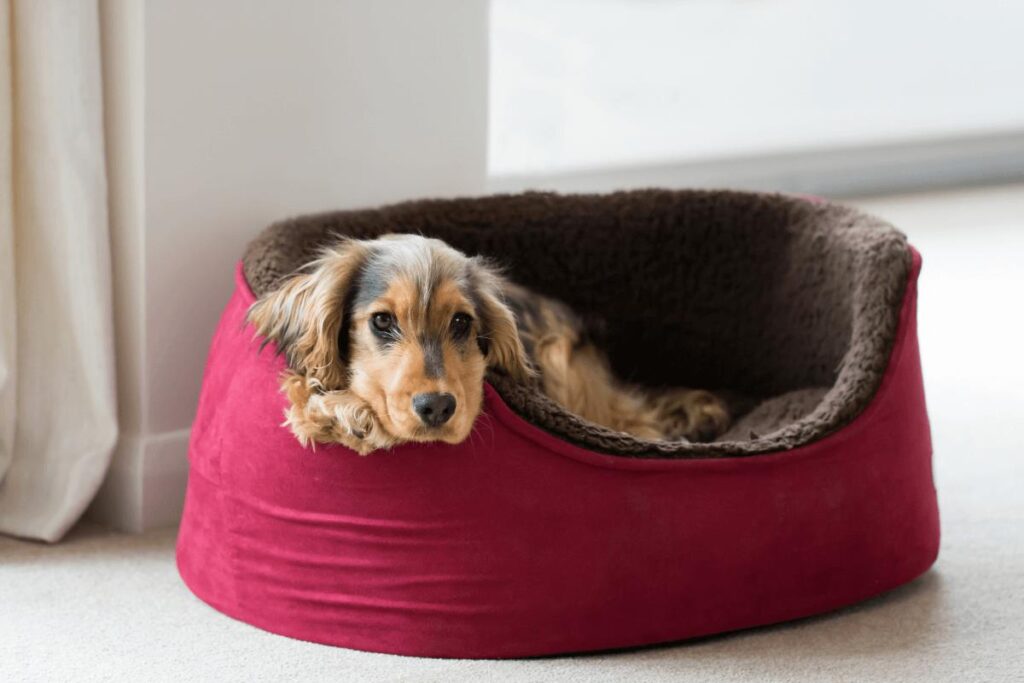Unwanted dog behaviors such as jumping on guests, begging at the dinner table, and excessive barking can be frustrating to deal with. However, teaching your dog the “go to your place” cue can help them relax in a specific spot regardless of what’s happening around them. Yet, training your furry friend to settle down on cue can be a daunting task, much like asking a high-energy toddler to sit quietly. So, how can you train your dog to stay calmly in one spot until released? Continue reading to discover the benefits of the go to your place behavior and a step-by-step guide on how to train your dog to do it happily.
Why Go to Your Place is So Useful?
Teaching your dog to go to their designated spot can be an effective approach to addressing unwanted behaviors such as jumping on guests or begging at the dinner table. Rather than constantly trying to prevent these behaviors, instructing your dog to go to their place creates an alternative response. For instance, when the doorbell rings, asking your dog to go to their place can prevent them from bothering guests while calmly lying in another room. Overall, sending your dog to their place is a useful tool that can help create a more pleasant environment for everyone.
How to Help Teach Your Dog The “Place” Cue?
Here are the steps to teach your dog the “place” cue:

- Teach your dogs to love going to their place. Make sure the place you have designated for them is the most rewarding place for them to be. Put all of your dog’s favorite treats right next to their bed.
- Pick a specific spot in your home where you want your dog to go and designate it as their “place.” This could be a dog bed, a mat, or a designated spot on the floor.
- Get your dog’s attention and lure them to the designated location with high-value treats or toys. Reward them with verbal praise and treats when they reach the spot.
- Repeat the process until your dog is comfortable going to their spot on cue with treats or toys.
- Add the verbal cue “place” as your dog approaches the designated location. Say “place” just before they reach the spot, then reward them when they get there.
- Repeat the process several times until your dog starts associating the “place” cue with their designated spot.
- Start adding distance between you and the designated location. Begin by taking one step back, saying “place,” and rewarding your dog when they go to the spot.
- Gradually increase the distance between you and the spot, being sure to use the “place” cue each time.
- Start off with an easier distraction, and work up to things that are more distracting for your dog. Move a toy around in your hand, knock on the door, walk around, etc. If this is too difficult, go back a step to be sure your dog understands what it is you are asking of them.
- Over time, you can start to phase out the lure and rely solely on the verbal cue. And remember to practice regularly to reinforce the “place” cue.
With patience and practice, training your dog to respond quickly and reliably to the “place” cue is achievable. This command serves as a valuable tool for managing your dog’s behavior and promoting relaxation in any situation.

